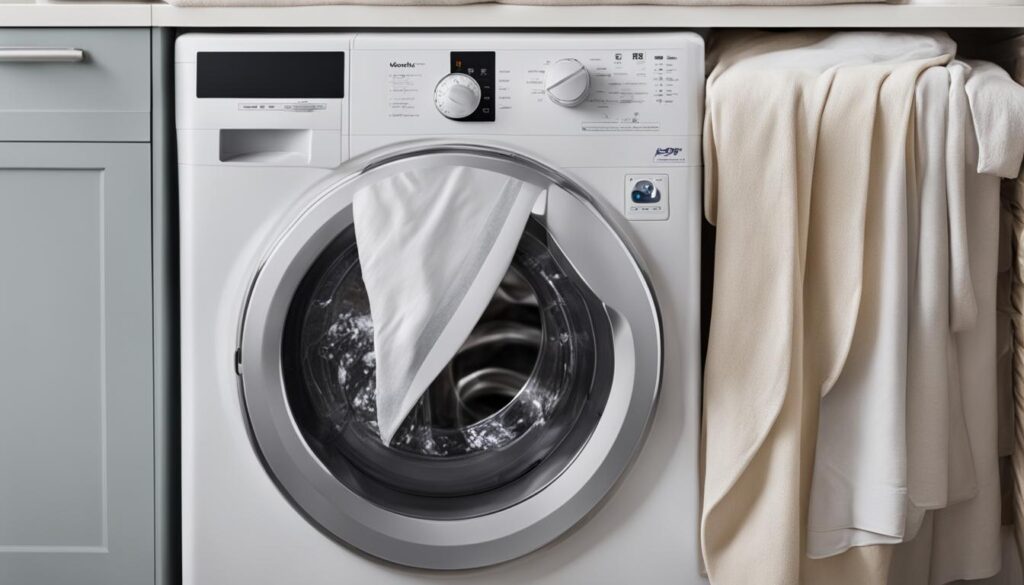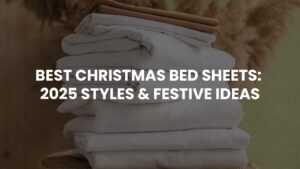Bedding Shrink Washing Temperatures: How to Prevent Laundry Mishaps
Bedding shrink washing temperatures can turn your favorite sheets into a tight squeeze. Learn how to wash wisely and preserve your linen’s size and softness with expert care techniques. For more laundry care insights, explore our ultimate guide on how to clean a bed mattress.
Key Takeaways
- Hot water (130°F+) may cause shrinkage in cotton or linen
- Warm water (90°F–110°F) balances cleaning power with fabric safety
- Cold water (80°F or lower) is best for delicates like silk and wool
- Always read and follow fabric care tags before washing
- Sorting by fabric type prevents bedding shrink washing temperatures issues
Best Practices for Washing Bedding
Bedding shrink washing temperatures often catch people off guard. The good news? A few tweaks to your laundry process can keep your linens in perfect shape. For example, following a laundry temperature guide for different fabrics can help avoid common mistakes that lead to shrinkage.
Separate and Sort
Sort bedding by fabric type and care label. Washing delicates like silk with sturdy cottons risks damage and uneven shrinking. Pay attention to bedding shrink washing temperatures during sorting for longer-lasting results.
Consider Cold Water
Cold water is the safest bet for preventing shrinkage, preserving color, and saving energy. It’s especially useful for brightly colored sheets or delicate fibers prone to shrink. You can also prevent fabric stress by understanding how to prevent shrinkage in the laundry using gentle cycles and proper detergents.
Gentle Treatment of Stains
Instead of using hot water for stain removal, spot-treat stained areas before washing. This approach protects fabric structure and helps avoid common bedding shrink washing temperatures pitfalls.
Save Energy and Costs
Use energy-efficient cycles and wash during off-peak hours. Cooler cycles not only reduce shrinkage risks but also lower your environmental impact.
The Impact of Different Washing Temperatures
How you set your washer matters. Bedding shrink washing temperatures influence everything from shrinkage to stain removal and longevity. You can refer to a helpful chart on recommended washing temperatures for cotton, linen, and synthetics to stay on the safe side.
Low Temperatures (20°C–30°C / 68°F–86°F)
Ideal for gentle fabrics and everyday freshening. Though less effective on heavy dirt, they’re perfect for preventing fabric damage.
High Temperatures (60°C–90°C / 140°F–194°F)
Great for disinfecting bedding but can cause significant shrinkage in cotton, bamboo, or wool. Use with caution and only when necessary.
Recommended Temperature
Stick to the label: cotton usually tolerates 40°C–60°C, while silk and wool should be washed cold or below 30°C to minimize bedding shrink washing temperatures risks.
| Temperature | Benefits | Considerations |
|---|---|---|
| Cold (80°F or lower) | – Gentle – Preserves color & shape – Saves energy | – May not fully sanitize – Longer cycles |
| Warm (90°F–110°F) | – Good overall clean – Safe for most fabrics | – May cause minor shrinkage |
| Hot (130°F+) | – Deep sanitization – Kills allergens | – Higher shrinkage risk – Energy-intensive |
Washing Instructions for Specific Bedding Items
Each bedding type requires its own care approach to prevent bedding shrink washing temperatures mishaps.
Cotton Bed Sheets
Wash at 60°C using mild detergent. Tumble dry low or line dry. Avoid fabric softeners, which can coat fibers and reduce breathability.
Delicate Fabrics (Silk, Wool)
Use cold water (below 30°C), gentle detergent, and never wring them out. Lay flat to dry to retain their shape and softness.

Tips for Washing Cotton Bedding
- Use temps under 40°C to avoid shrinkage—especially after the first wash
- Wash new sheets separately to prevent color transfer
- Choose detergents formulated for cold water
- Air dry or tumble dry on low to minimize damage
- Iron with care, using settings appropriate for cotton
FAQ
- Does washing at 60 or 90 degrees cause shrinkage?
- Yes. High temperatures can cause significant shrinkage, especially in cotton or natural-fiber bedding. Always follow care labels closely.
- What’s the best way to prevent bedding shrink?
- Wash in cold or warm water, sort by fabric type, and treat stains gently. Avoid drying on high heat.
- How do washing temperatures impact bedding longevity?
- Cold is best for longevity. Warm is balanced. Hot cleans thoroughly but shortens lifespan due to shrinkage and fading.
Explore More from Cozy Bed Quarters
Other Reading We Found Popular
- Guide to Bedding and Sleep Quality
- How Often Should You Wash Your Sheets?
- Best Laundry Habits for Sheets and Towels























